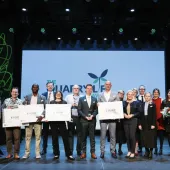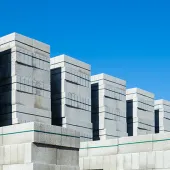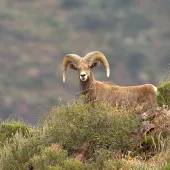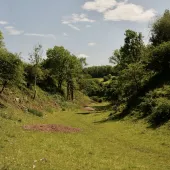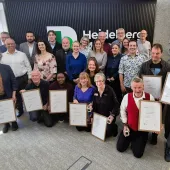CEMEX Making a Positive Impact
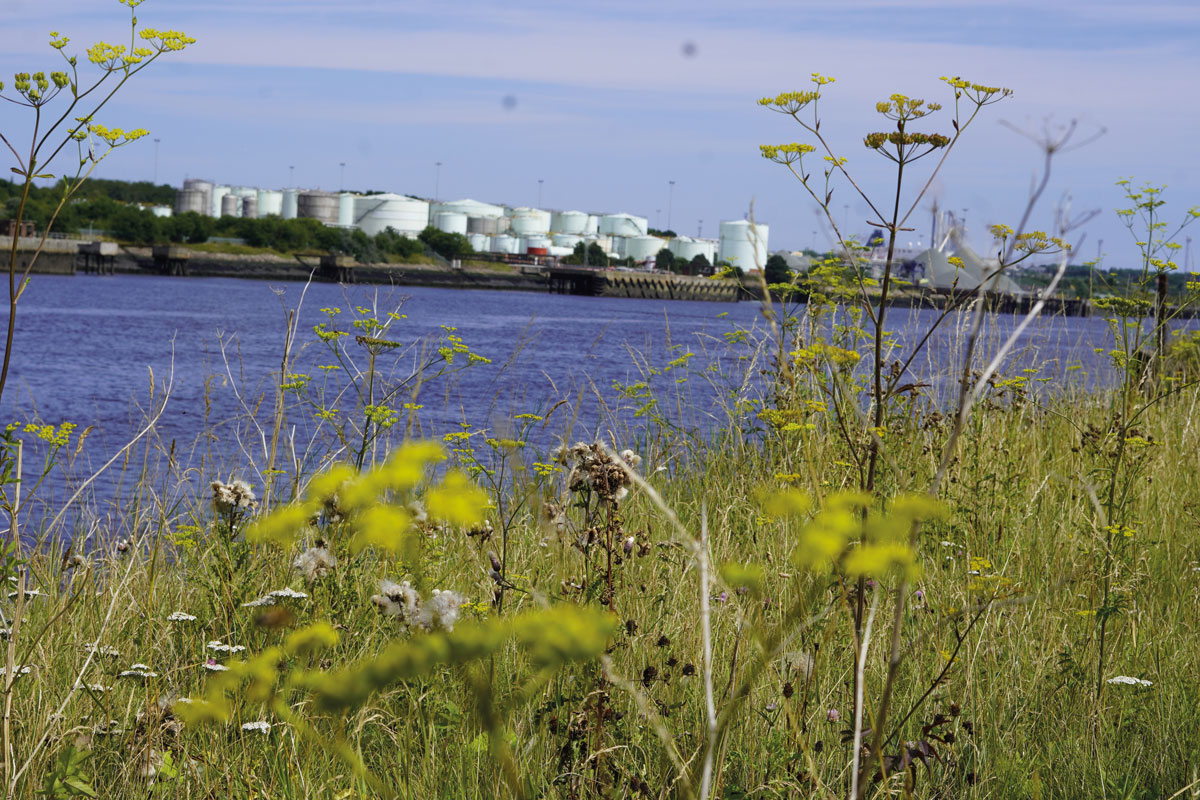
First published in the May 2022 issue of Quarry Management
Miranda Clegg, sustainability manager at CEMEX UK, outlines how habitat restoration and conservation work is enhancing biodiversity as part of CEMEX’s wider global Future in Action strategy
Over the past 12 months we have arguably seen more attention paid to the sustainability of industry than ever before. Across the globe, consumers and businesses alike have woken up to the realities of climate change, our contribution to carbon emissions and whether we help or hinder the wider environment, and our industry has been in the frame as one of the most significant global contributors.
We believe that climate action is the biggest challenge of our time. The next decade’s strong action will be critical to set the path towards 2050 and the commitment made by the UK and EU to be carbon neutral. If we are to meet this goal, everyone, no matter the size or perceived adaptability of their business, will have to make sustainability a priority.
However, many of us in the construction industry have already been making considerable progress in this regard and will continue to work hard to reduce emissions and minimize our impact in the environment. For our part, CEMEX have announced a ‘Future in Action’ climate action strategy, defining a global target to achieve 35% CO2 reduction by 2025 and 40% by 2030, compared with 1990 levels. This new goal is validated to the well-below 2°C scenario of the Science-Based Targets initiative. In Europe, the target is a 55% reduction by 2030 and CEMEX are the first company in the sector to align to the EU’s aspiration to achieve this across all member states.
Our restoration and biodiversity work are important aspects of this commitment and our wider Future in Action strategy. Our dedicated Biodiversity Policy allows us to responsibly handle natural resources by integrating practices with best standards and aligning our biodiversity initiatives with our decision-making process, management system, and business model. The policy is aligned with the Convention on Biological Diversity and its Aichi Biodiversity Targets.
As can be seen in CEMEX’s latest Integrated Report, in 2021 we continued taking action to enhance the biodiversity in and around our quarries through the implementation of rehabilitation plans, conservation initiatives, and the development of local Biodiversity Action Plans (BAPs). The Global Cement and Concrete Association (GCCA) Sustainability Guidelines for Quarry Rehabilitation and Biodiversity Management – to which CEMEX are fully committed – underscore the importance of these actions.
We see restoration as our legacy; our company perception is based on how we leave an area after we have been there. In the UK, restoration is enshrined in legislation and is a material consideration when applying for permission to excavate, but nevertheless across the globe we work with local communities and partners to ensure we can make a positive difference for the natural environment. A particular highlight for the business must be our El Carmen Conservation Programme in Mexico and Texas, while in the UK, we have been very pleased with the progress made at Jarrow Wharf over recent years.
It can be overwhelming to focus purely on a global vision for sustainability and the environment – but by breaking down a wider strategy into action pillars every employee can see where they can make an impact and be inspired to look at where and how they work with fresh eyes. We encourage all employees to think creatively and be empowered to suggest ideas to improve sustainability – not only can they make a difference at their location, but we can also extend this to other sites across the country.
Great examples of small changes being made locally to improve the environment for wildlife include the installation of a hibernaculum at the company’s Salford asphalt plant – this was placed on a bank that had previously been sown with wildflowers so already attracts birds, bees, and other insects, providing an opportunity for reptiles to also prosper here. Meanwhile, the team at Langley Quarry have created small garden spaces in between work cabins with plants and even a vegetable patch.
These efforts remind us all that it is not only large quarries in the countryside that need to think about how to help nature, urban sites can also do their bit for nature; perhaps using a tiny strip of land by the entrance or a spare space which is currently ignored; it can all potentially be used to support wildlife and plants. It is not just the right thing to do, it is also a legal requirement now Biodiversity Net Gain has been implemented as part of the new Environment Act. The law requires most new developments deliver at least a 10% gain in biodiversity starting from 2023. To help comply with Net Gain local authorities are compiling Local Nature Recovery Strategies. The strategies will highlight the types of habitats that should be created or preserved within their county boundaries. In urban locations this is likely to include features such as wildflower strips, ponds, meadow, scrub, or even wooded areas.
These are just a few examples of the efforts that are being made by our locations to support wildlife and the local environment. These projects were relatively simple and straightforward to implement but can have a real impact. Employees on these sites have been able to see first-hand what a difference it makes and how easy these ideas have been to action, and this encourages them to suggest further ideas.
We all have a role to play to ensure that future generations can enjoy the planet as we have done, and enhancing and restoring the land we use in our operations is part of this. At CEMEX, we believe that every one of our sites, and every single person in our business, can make a positive impact.
The more we all do in the areas of environment and restoration will result in a wider appreciation of the efforts that have been made – and it serves to inspire the rest of the value chain, both local and global. We further hope that the progress made will translate into a better perception of our industry – an acknowledgement that we have recognized the scale of the challenge and stepped up to the plate.
Biodiversity Spotlight:
CEMEX Global – El Carmen Conservation Programme
In 2021, CEMEX’s El Carmen Conservation Programme celebrated 20 years of continued habitat restoration, species preservation, and scientific research.
Through the El Carmen Conservation Programme, CEMEX have been able to restore habitats and reintroduce wildlife in a region that is eight times larger than the total area of the company’s global operations. Located in northern Coahuila in Mexico and southern Texas in the US, El Carmen is home to more than 1,500 plant species, 289 avian species, 80 types of reptiles and amphibians, and 78 mammal species, including some endemic species.
Reintroduced species in El Carmen include 1,400 black bears (the largest population in Mexico), 100 pronghorn antelope (which had been extinct since the 1950s in the region) and more than 50 American bison (currently on Mexico’s list of endangered species).
El Carmen’s extensive cross-border wildlife and biodiversity reserve has provided numerous educational opportunities to more than 1,250 students and academics, who have studied the region’s biodiversity, as well as CEMEX’s positive impacts and high conservation standards.
El Carmen holds active co-operation agreements with several conservation NGOs from Mexico and the US. CEMEX’s conservation initiatives are implemented in co-ordination with Mexican government agencies such as CONANP, SEMARNAT, CONAFOR and SEMA Coahuila, and with US entities such as the National Park Service, the Fish and Wildlife Service, and the Texas Department of Parks and Wildlife.
Since 2016, El Carmen has annually received the Gold Conservation Certificate, the highest award granted by The Wildlife Habitat Council for conservation efforts.
Biodiversity Spotlight:
CEMEX UK – Jarrow Wharf
CEMEX UK’s Jarrow Wharf site is located on the bank of the river Tyne and the team there are making good progress implementing a Biodiversity Management Plan (BMP). During the past two years the site has monitored wildflowers, butterflies, and other types of wildlife, whilst also ensuring nesting seabirds remain undisturbed. Checks for invasive weeds are made and if spotted eradication plans are implemented, and any non-native scrub, mainly self-seeded ornamental plants, is also removed if required. To protect nearby waterways and help preserve invertebrates, the site does not use herbicides or insecticides.
Being close to the north-east coast, sea buckthorn scrub, native to the mouth of the Tyne, has established in some areas on site. This is used by nesting songbirds during spring and summer, whilst the seeds provide a food source for the birds well into the winter. The team on site are delighted to see herring gulls, which have been in decline nationally, successfully nesting every year. The red-listed kittiwake and protected Arctic terns have also been spotted on site as they nest or forage on the estuarine riverbank.
Jarrow Wharf also has several hectares of grassland which support a diverse range of wildflowers. The site is unique in that several different habitats can be found within metres from each other – from marine near the wharf edge, to ephemeral and ruderal species (short lived or annual plants) on bare surfaces or short-cropped grass, and more established plants (perennials) in longer grass.
Within a short distance it is possible to encounter sea-spurrey, kidney vetch, burnet-saxifrage, or wild carrot. The rich diversity of wildflowers supports rare invertebrates including UK priority species such as wall brown and dingy skipper butterflies. The site is also home to nine species of native bumblebee, which not only support biodiversity at the site but also help establish a local nature network to expand into surrounding areas.
- Subscribe to Quarry Management, the monthly journal for the mineral products industry, to read articles before they appear on Agg-Net.com


